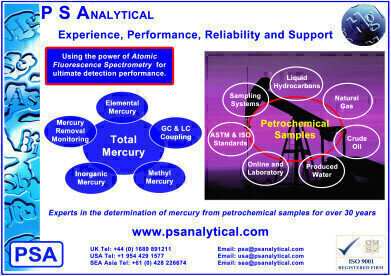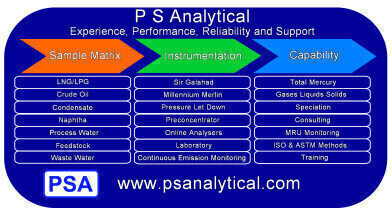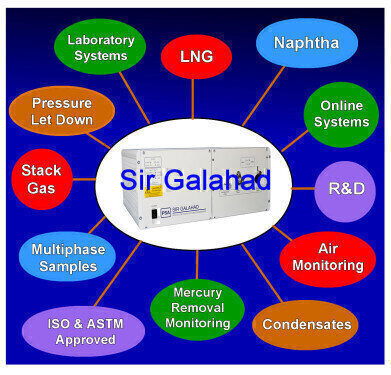Analytical Instrumentation
Mercury and Petrochemicals - How to select the most appropriate sample handling and analysis combination?
Mar 16 2016
It has never been more important to understand the fate of Hg in all aspects of oil and gas exploration, refining and production. The corrosive nature of Hg reacting with aluminium; the fate of Hg within a process itself; the concentration of Hg in feedstocks that could destroy expensive catalysts; as well as the OH&S concerns that Hg poses are, of course, well documented and are often a key driver in operational decisions.
Selecting the most appropriate tools for the sampling and subsequent determination of mercury (Hg) from a variety of petrochemical sample matrices presents several challenges to the analyst.
What do we want to know?
For the majority of laboratories the answer to this question is a simple one. We want to analyse our samples for the Total Hg concentration. This is not always the case and if a laboratory requires information on the various species that make up this Total Hg, then there are a number of selective extractions, digestions, filtrations etc. that may be carried out. For more information concerning Hg speciation and fractionation visit our website.
What’s the sample matrix?
So we want to know the Total Hg concentration. The next challenge is how to handle or prepare the sample correctly. The nature of the matrix is a critical factor in our analytical decision making process. The sample may be gas or liquid, or indeed a mixture of the two – so how do we take a representative sample to ensure an accurate result?
The sample may need collection at high pressures, may be presented from inert cylinder (bomb) or may even be collected in a Tedlar bag if the Hg concentration is high enough.
All of these factors require careful consideration and a 'one size fits all approach' is rarely appropriate.
Other associated industry analyses may be required such as; determination of Hg environmental discharges, the analysis of removal bed and catalyst materials for performance studies, as well as OH&S exposure testing of blood and urine for the workers involved.
What sort of analytical performance do I need?
What are the detection parameters required in terms of sensitivity, selectivity, linear working ranges, on-line automation, ease of use, robustness and affordability?
So from the simple requirement to determine Total Hg we have a number of factors to consider. Do you need any help to make the correct decisions?
For over 30 years P S Analytical (PSA) has been at the forefront of trace mercury (Hg) determinations from petrochemical samples. The analysers are designed and manufactured to suit all aspects of the monitoring and analysis of Hg, including laboratory instruments and on-line analysers for gases, liquids and multiphase samples; as well as solutions for speciation (fractionation) analysis and also waste water systems associated with petrochemical processes.
Employing Atomic Fluorescence as a means of detection the PSA analysers provide ultimate detection performance and usability. With literally thousands of systems in the field today, and support networks in Europe, USA and SE Asia, PSA offers the ideal package of performance, reliability and support.
So if you are unsure how to proceed, or would like some further information or guidance please contact us.
Digital Edition
PIN 25.2 Apr/May
April 2024
In this Edition Safety - Carbon monoxide toxic and flammable gas detection Analytical Instrumentation - Density: A fundamental parameter at critical stages within the petroleum sector...
View all digital editions
Events
May 03 2024 Seoul, South Korea
May 05 2024 Seville, Spain
May 06 2024 Riyadh, Saudi Arabia
May 06 2024 Houston, Tx, USA
May 06 2024 Houston, Tx, USA




















